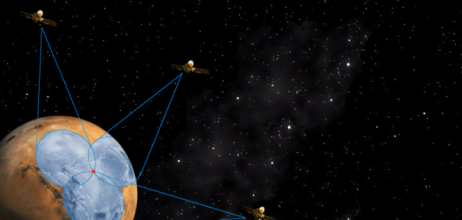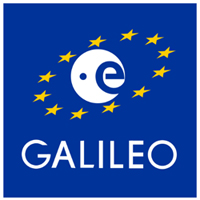Universal and precise positioning services on Mars may not be just science fiction in our future. A proposed theoretical concept of a satellite navigation system for Mars promises a solution for future manned missions and future planetary exploration robotic missions to the red planet, according to new research released this week.
Universal and precise positioning services on Mars may not be just science fiction in our future. A proposed theoretical concept of a satellite navigation system for Mars promises a solution for future manned missions and future planetary exploration robotic missions to the red planet, according to new research released this week.
The concept is part of a scientific research project of GNSS for Mars — “GNSS FATIMA.” The lead scientist working on the project is Dr. Jozef Kozar from Mars Systems Laboratory and the faculty of Aeronautics of Technical University of Kosice in Slovakia.
The concept of a satellite navigation system for Mars contains an autonomous GNSS designed for the physical conditions of the planet Mars, according to Kozar. Its basics are similar to the known satellite navigation systems on Earth. The proposed system’s constellation of the satellites includes 15 navigation satellites in three orbital planes, each containing five satellites.
According to the Mars Systems Laboratory studies, the satellite navigation system for Mars could prove to be one of the most important systems in the future exploration of this planet. It would reduce the errors related to positioning, navigation services, geodetic services and minimize the risks of missions – both robotic and manned. The laboratory is a non-profit, privately run research facility currently based in Kosice, Slovakia. The laboratory works in areas of planetary science and aerospace.
“This system will dramatically reduce the costs of future exploration of Mars. It will allow us to focus our engineering resources more into the field of design and production of research systems, to planning complex missions and to simplify some parts of the planetary exploration itself,” Kozar said.
Research of the global navigation satellite system for Mars is no easy task. It incorporates many facets, including space systems engineering and planetary science covering the ionosphere and magnetosphere. The research also addresses the entire planetary influence of the close environment around Mars, in addition to the interplanetary conditions of the solar system. Some of the aspects which may influence precise function of such a system at Mars include influences of gravitational fields of near space bodies, because Mars is a neighbor of the asteroid belt located in orbit around the sun between Mars and Jupiter, the research states.
The desired function of such a satellite navigation system is to provide a condition of safe and effective operation of exploration devices, which currently use the given system for its positioning and navigation. So Kozar says it is necessary to focus on studies and experiments covering four important parameters of navigation performance – precision, integrity, continuity, and availability. All of these are integral parts of the algorithms used in the operation of the Mars satellite navigation system.
Kozar and his team of scientists and systems engineers determined the main difficulty in the process of computing results was directly projected to the calculated position by the navigation system, which they call “a dilution of precision.”
“We are focused on the study of all dilutions of precision, because we have just completed the first proposal of the parameters of the satellites’ orbits of the constellation,” he said.
The project also is looking into other aspects which may influence a satellite navigation system on Mars. The research uses complex data from the ionosphere of Mars directly measured by spacecraft currently operating at Mars, and also archived data from past missions. “We have to rely on this data, because these are the best resources we currently have,” Kozar said.
In the future, Kozar says, the universal system for positioning and navigation will be capable of helping to determine a precise location of each module, which will be sent to Mars before the first manned-module would land on the surface.
Future robotic missions and manned missions would then be able to share the data and their precise position in a universal way and in the universal time. This universal time will be an added benefit provided by the global navigation system for Mars.
The study states that each of the satellites of the constellation will need to use a precise atomic clock on board. The clocks will be synchronized so this additional service can be broadcast on the entire surface of the planet Mars. A portion of this research paper has recently been published in the journal Aviation and titled “Geometric dilution of precision of the GNSS for Mars (GNSS FATIMA).”






